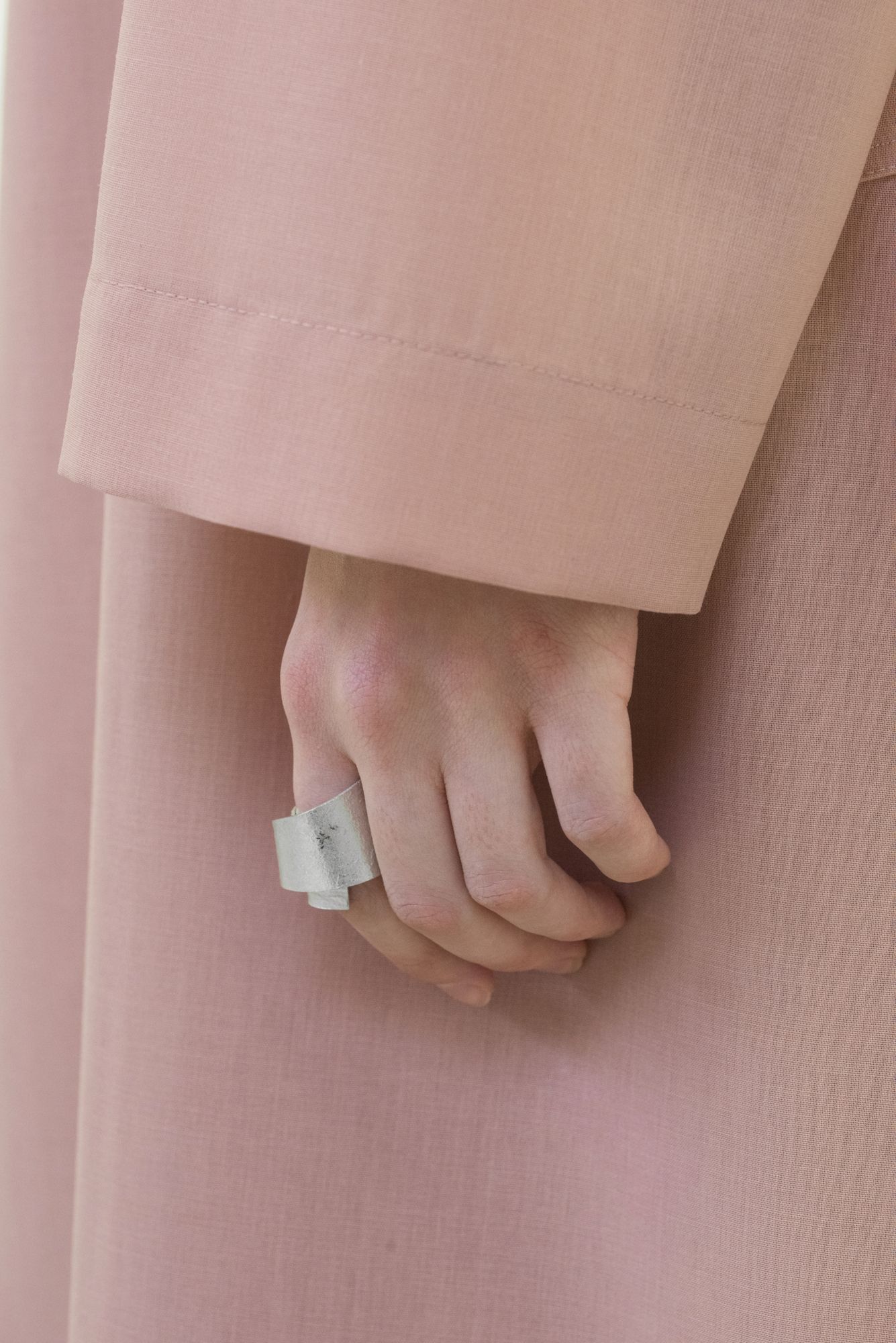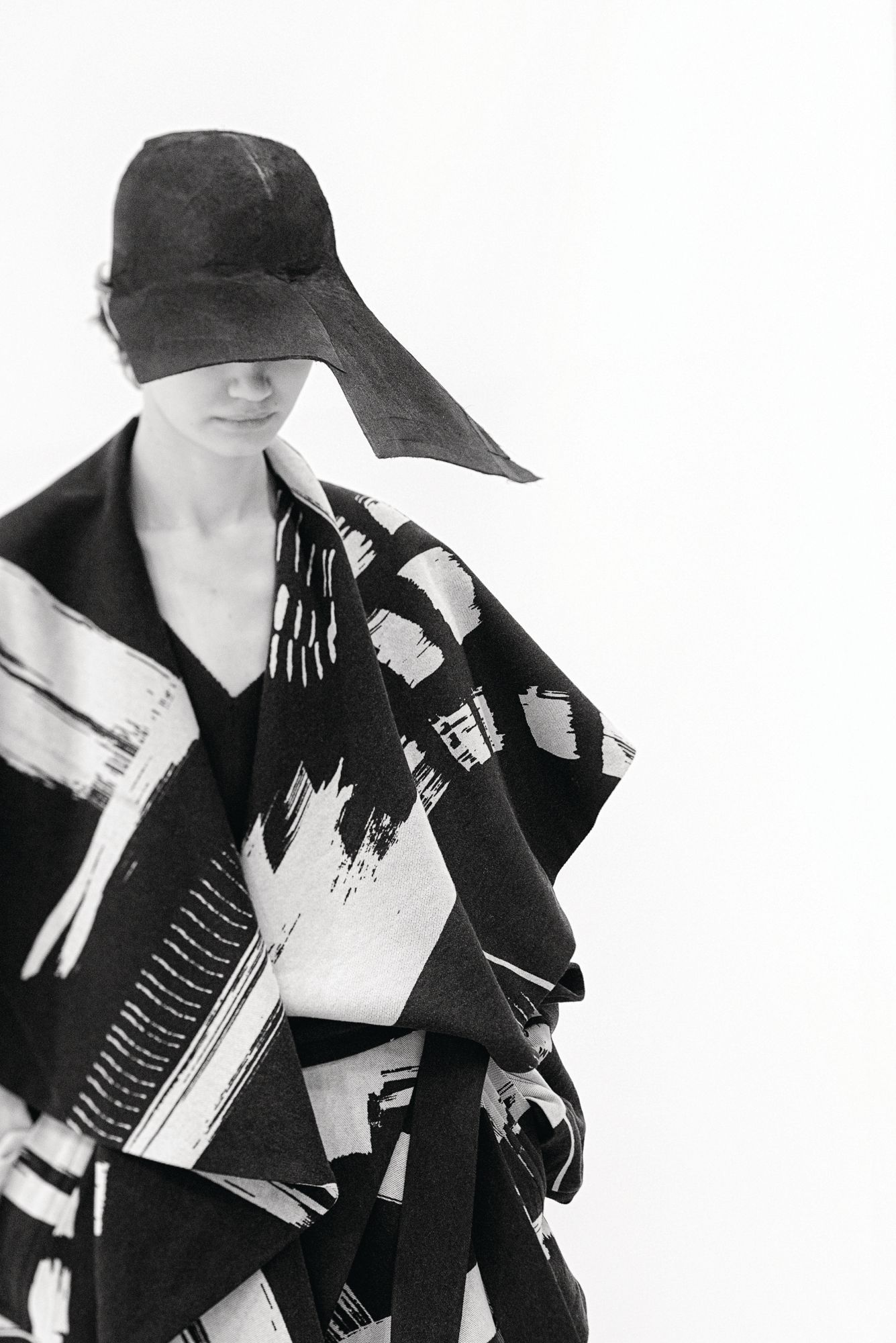The new head designer aspires to make his mark on the Japanese house without forsaking its storied history
Satoshi Kondo began to draw with a red pencil. He scratched lightly on the back of a press release, illustrating an outline of the final look from his latest collection—one garment comprised of several knitted tops that were connected by their sleeves. His interpreter and I stared in silence at this unexpected gesture from a designer who, after commanding the fashion world’s attention with his debut collection for Issey Miyake last September, remains somewhat elusive.
“This look is called ‘Hand in Hand’,” says Kondo. “It’s one continuous knit with various fabrics fused together so that there is always a piece of the previous garment in the next.” He then flipped the pencil over and with its end poked around the page. “We didn’t express this explicitly at the show but, based on my sketches, each piece should have been the same size, but because of the property of the material—wool or polyester might shrink or cotton might expand—the finished products varied. Some turned out smaller, some larger. With this ‘Whole Garment’ method, you never know what you’re going to get.”
(Related: How 10 Asian Designers Held Their Own At Fashion Week)

We were chatting in Paris on a drizzly March afternoon, the day after he showed his second collection as artistic director and head designer for the house. An assistant came to serve hojicha and biscuits, offering a touch of Japanese hospitality in an otherwise sterile studio on Place des Vosges. The young designer’s tent dresses and stretchy knits comprised the only vibrant colours splashed on rails and rails of clothing on the first floor where we were seated.
Ties That Bind
Kondo says he wanted to convey notions of unity and connectedness throughout the final act of his fall show, which featured models of various ages, ethnicities and sizes joined together by the trailing strands of fabric from the shoulder or hip, creating an extensive human chain. The interpreter was unable to precisely translate its construction, so Kondo picked up the pencil to explain exactly what he intended.
“And what you also may not know just by looking is that each coloured piece is made from leftover yarn from Japanese factories merged with fresh, new yarn,” he continues to explain.
(Related: Tatler Hot List: Asia’s Biggest Fashion Stars)







